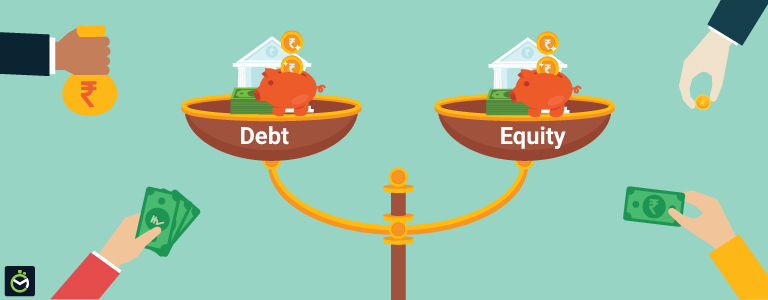In the world of mutual funds, balanced funds are those that invest in a wide variety of assets across multiple risk categories. It's possible that this type is more conservative than moderate or even aggressive. Investing in a balanced portfolio can be done with any one of a wide variety of available funds, with both actively & passively controlled options available. The most advantageous balanced funds are nearly always ones that can be held for a number of years, perhaps even for many decades. The best-balanced funds will include all the standard features found in mutual funds of all types. When purchasing index funds, solely take into account low no-load funds. It is understandable that consciously managed funds would incur higher expenses. However, there are numerous excellent low-cost balanced funds available. Let's look at the best balanced funds for long-term investment.
The Definition of Balanced Funds

The most common type of balanced fund includes stock, bond, and cash investments. Gold and silver, as well as oil and other commodities, are also included by some. When you invest in a balanced fund, you're essentially buying shares in several different mutual funds all at once. When searching for a balanced fund, you'll likely find that they are categorized by its asset distribution strategy. The three basic groups are one that is conservative, one that is moderate, and one that is aggressive. The asset distribution of conservative funds is roughly 30 percent stocks, 50 percent bonds, and 20 percent cash. Mutual funds in the moderate range typically hold somewhere between 65 percent & 35 percent bonds. A typical stock-bond allocation for aggressive funds is 80-20.
Who Puts Money Into Balanced Funds?
Balanced funds may be utilized to achieve a number of investing goals, techniques, and portfolio management goals. They are often utilized as stand-alone investments by novice investors seeking a solid start with diverse mutual funds. They don't have to put down as much money as they would have to if they invested in numerous mutual funds at once. Balanced funds are often used as the backbone of a diversified portfolio of funds. You may, for instance, put most of your money into a balanced fund. Smaller investments in other types of funds, such as those focused on overseas stocks or certain industries, might be used to supplement the core holding.
Long-Term Balanced Investment Funds
In short to medium term, say between one and five years, you may apply some cautious allocation of funds. Most mutual funds, particularly balanced funds, are best suited for ten-year or longer investments. Consider these recommendations for long-term investments.
Vanguard Wellesley Income
More than 40 years have passed since this fund's inception. If you're looking for a conservative allocation fund, this is one of the better options out there. Between 35 percent and 40 percent of the VWINX portfolio is invested in equities, while the remaining 60% is in bonds. Cash replaces the rest. Over the last three, five, and ten years, Wellesley has outperformed at least 90 percent of comparable conservative allocation funds. They average approximately 7%, which is comparable to many stock-only products. It has a cost ratio of 0.26%, and the least you can invest at first is $3,000.
Vanguard Wellington
Since 1929, investors have had access to this particular fund. There is no need to abandon this fund at this time. VWELX is classified as a moderate allocation index since it has a stock-bond ratio of around 65%:32%. The fee ratio is 0.25 percent, and the first investment requirement is $3,000. It's among the balanced funds best options.
Vanguard Balanced Index
If you are looking for an index fund that is low-cost, does not charge any loads, and contains a balanced portfolio of equities and bonds, you need to look no further than VBINX. Because of its low-cost ratio of 0.18% and its diverse stock and bond holdings, VBINX may serve as a solid anchor for any well-rounded investment portfolio. It's also a good first investment since you can do it on your own. In the long run, returns have averaged between 6% and 8%. If you're looking for a fund with a moderate amount of risk, look no further. The entry-level investment is $3,000.
Vanguard STAR
An investment of just $1,000 is required to get started with this fund, which is significantly less than what is required with many other Vanguard funds. One reason it's called a "fund of funds" is that its investments are diversified across multiple mutual funds. Since it holds shares in ten different Vanguard funds, the STAR fund is a good choice for beginners or those who prefer a simplified investment strategy. The cost-to-income ratio is 0.31.
Fidelity Balanced
For those looking for a well-rounded portfolio, look no further than FBALX. At least sixty percent of its assets are invested in stocks, while about twenty-five percent of those assets are invested in bonds. All remaining funds are in cash. The proactively administered fund FBALX has a track record of outperforming category averages. Returns over the long term are at least 7%. With no entry requirement and a low expense ratio of 0.52%, this fund is a great option for investors.
How Can You Choose From Many Balanced Funds?

Finding out if you possess an energetic, modest, or conservative attitude is the first step in choosing the right balanced fund for you, as balanced funds offer a number of different aims. You may then filter down your options based on the cost ratio, past performance, and other information regarding the fund management team. Many individuals go for the best fidelity balanced funds nowadays,




